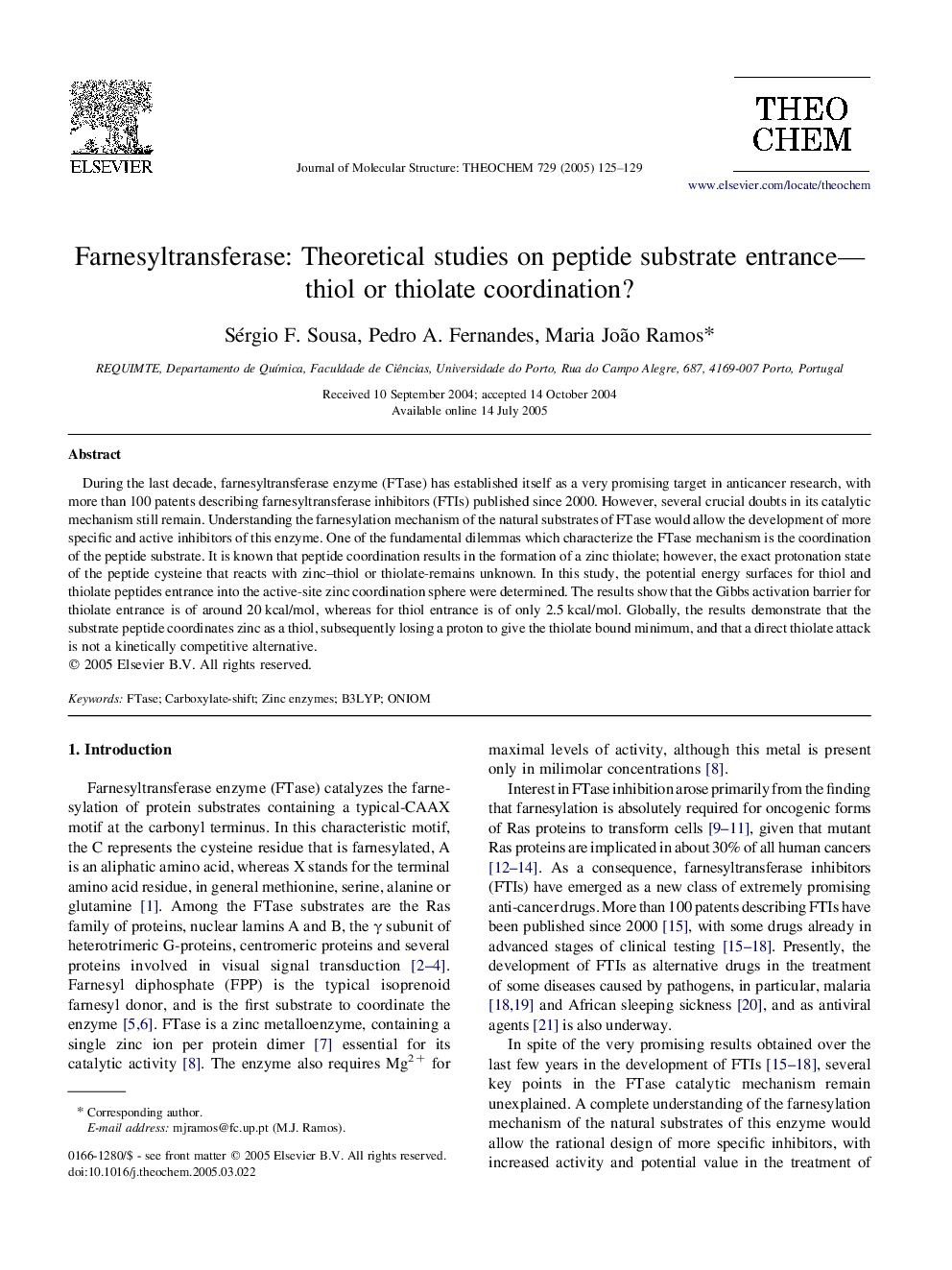| Article ID | Journal | Published Year | Pages | File Type |
|---|---|---|---|---|
| 9591075 | Journal of Molecular Structure: THEOCHEM | 2005 | 5 Pages |
Abstract
During the last decade, farnesyltransferase enzyme (FTase) has established itself as a very promising target in anticancer research, with more than 100 patents describing farnesyltransferase inhibitors (FTIs) published since 2000. However, several crucial doubts in its catalytic mechanism still remain. Understanding the farnesylation mechanism of the natural substrates of FTase would allow the development of more specific and active inhibitors of this enzyme. One of the fundamental dilemmas which characterize the FTase mechanism is the coordination of the peptide substrate. It is known that peptide coordination results in the formation of a zinc thiolate; however, the exact protonation state of the peptide cysteine that reacts with zinc-thiol or thiolate-remains unknown. In this study, the potential energy surfaces for thiol and thiolate peptides entrance into the active-site zinc coordination sphere were determined. The results show that the Gibbs activation barrier for thiolate entrance is of around 20Â kcal/mol, whereas for thiol entrance is of only 2.5Â kcal/mol. Globally, the results demonstrate that the substrate peptide coordinates zinc as a thiol, subsequently losing a proton to give the thiolate bound minimum, and that a direct thiolate attack is not a kinetically competitive alternative.
Keywords
Related Topics
Physical Sciences and Engineering
Chemistry
Physical and Theoretical Chemistry
Authors
Sérgio F. Sousa, Pedro A. Fernandes, Maria João Ramos,
